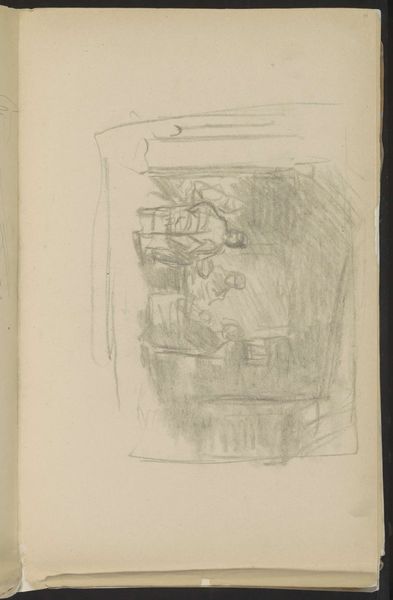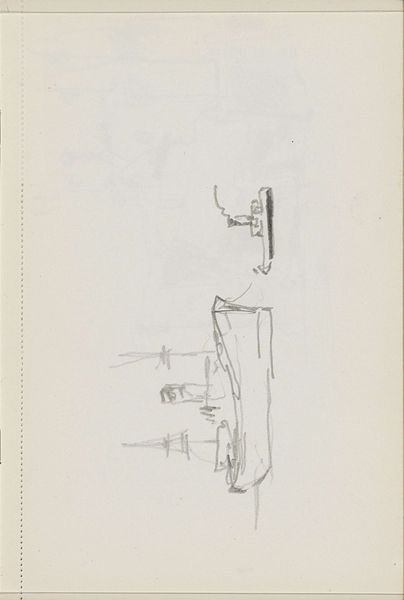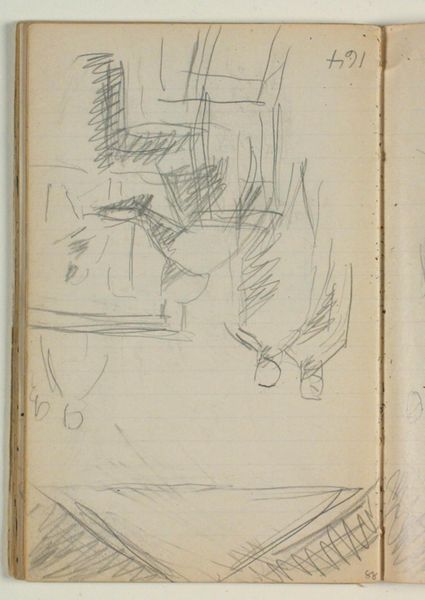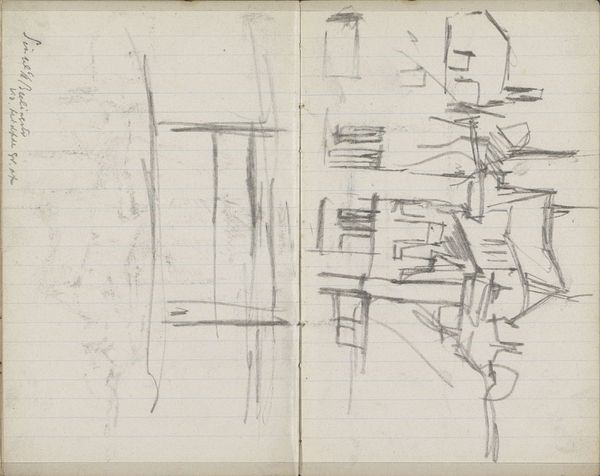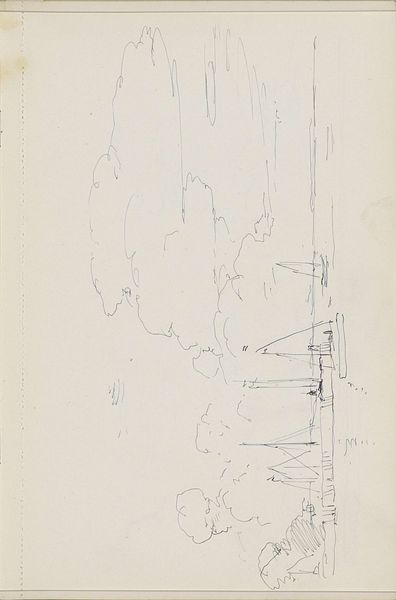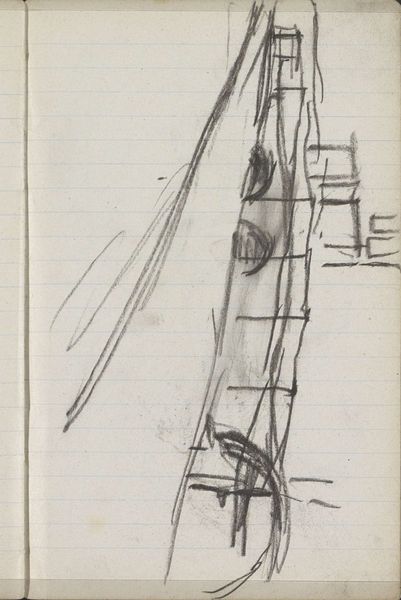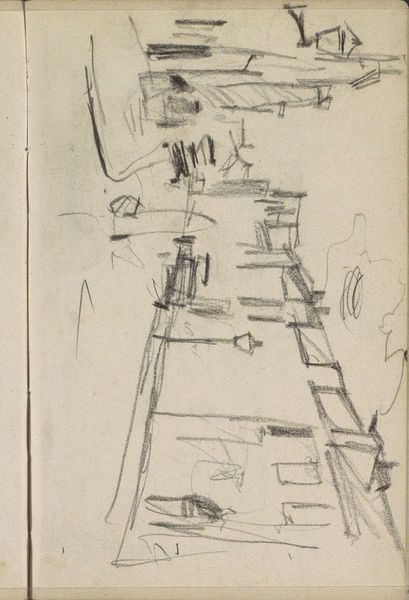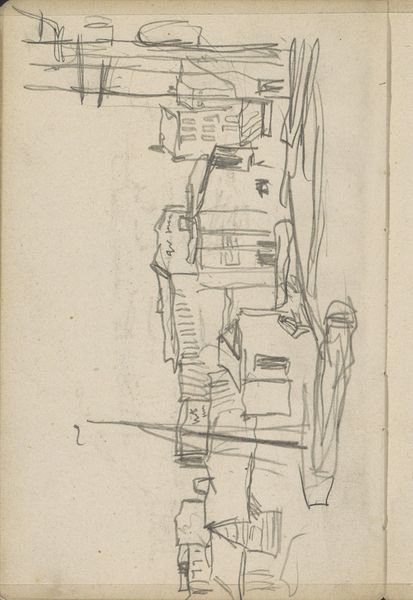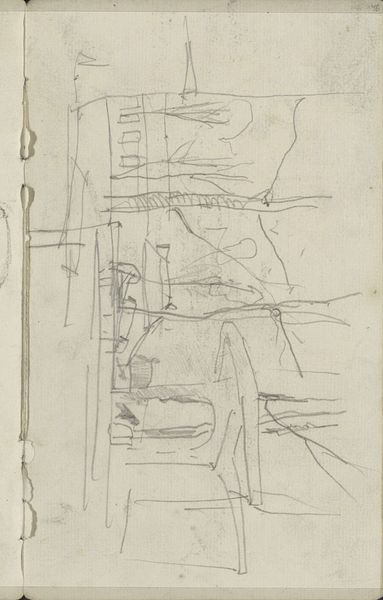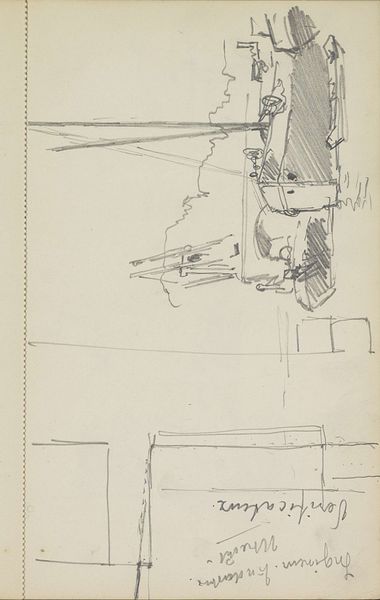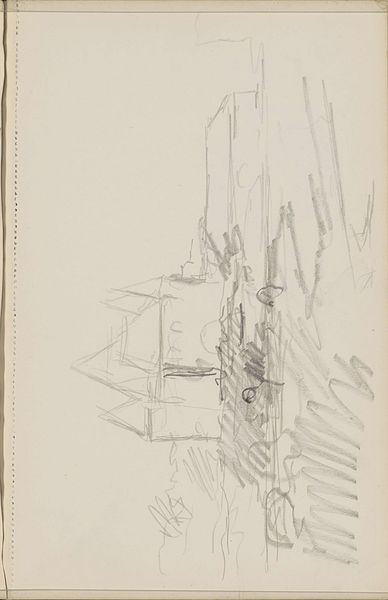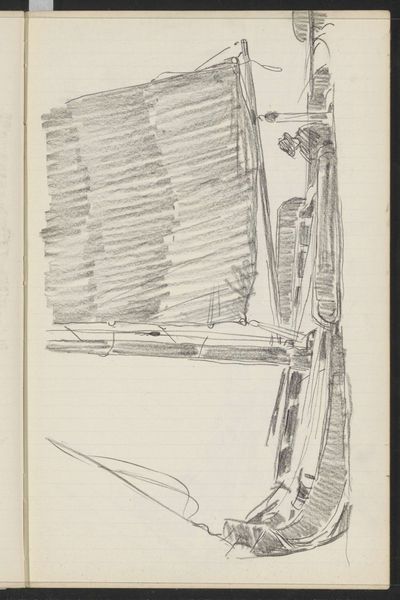
drawing, pencil
#
drawing
#
pen sketch
#
sketch book
#
hand drawn type
#
landscape
#
personal sketchbook
#
sketchwork
#
geometric
#
pen-ink sketch
#
pencil
#
pen work
#
sketchbook drawing
#
storyboard and sketchbook work
#
sketchbook art
#
realism
Copyright: Rijks Museum: Open Domain
Editor: Here we have Willem Bastiaan Tholen’s "Ophaalbrug", a pencil and pen drawing from between 1900 and 1931. It looks like a page torn from a sketchbook. I'm immediately struck by the geometric shapes; it almost feels like a technical drawing, yet there’s a delicate, ephemeral quality to the lines. What stands out to you? Curator: What I find compelling about Tholen’s "Ophaalbrug" is how it situates industrial development within the landscape. This wasn't simply a depiction of scenery, but an engagement with modernity. How might the bridge serve as a symbol for connection but also disruption of rural communities? Editor: That’s a fascinating point! I hadn’t thought of it that way. So, beyond just seeing a bridge, you see this work as commenting on the changes happening in society at the time? Curator: Precisely! Think about the role of infrastructure in enabling commerce and the movement of people, but also in potentially displacing communities or altering traditional ways of life. How can art reflect the effects of power structures? What's your opinion on realism used in art to make such sociopolitical statements? Editor: It's like the bridge is not just connecting two points, but it's also bridging the old and the new, the rural and the industrial. Realism can then act as a visual document of this intersection and the subsequent disruption or development. Curator: Exactly. Considering Tholen's landscape, and art’s inherent power in reflecting societal progression and discord. Editor: I learned a lot about interpreting landscapes with a critical, historical eye. Curator: And I appreciate your fresh perspective, reminding us to always consider the socio-political undertones beneath seemingly simple images.
Comments
No comments
Be the first to comment and join the conversation on the ultimate creative platform.
